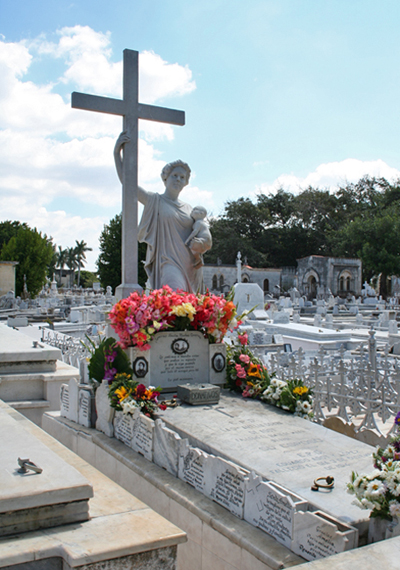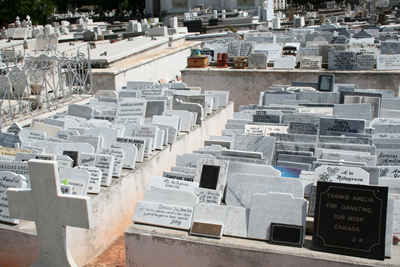Source: Photograph (2010) by WTL© on site in Havana.
Comment: On the left you the beautiful tomb known as "La Milagrosa" (the Miraculous Lady), which does not refer to Santa María/the Virgin Mary, but rather to Amelia Goyri de la Hoz. On the right you see the testimonial tablets set up in her honor by those who have prayed to La Milagrosa for miracles and felt that their petition was granted. Amelia and her child both died in childbirth in 1901; she was 24 years old. Both were buried together. A few years later the tomb was opened and both Amelia and baby in her arms were still intact. Amelia's husband and the baby's father had been in such grief that he would go to the the tomb every day and never turned his back to it/them. Hence, Amelia became a symbol of "undying" maternal love, and thus the popular belief in Havana grew to the effect that she is the protector of pregnant women and newborn babies. In this way, her tomb is an object of pilgrimage and veneration. The sculptor was José Villalta de Saavedra (1909).
Humanities topic: Describe (A) your personal reflections on this tomb and (B) place your thoughts within the context of Latin American humanities and humanity (i.e., two distinct categories).



